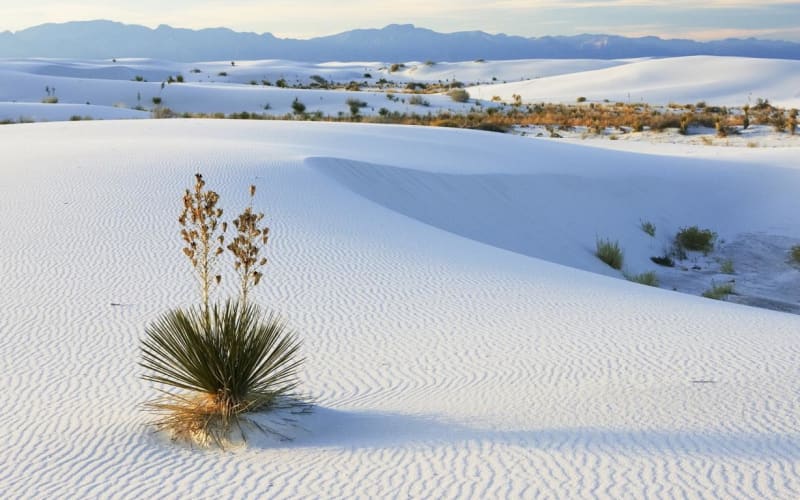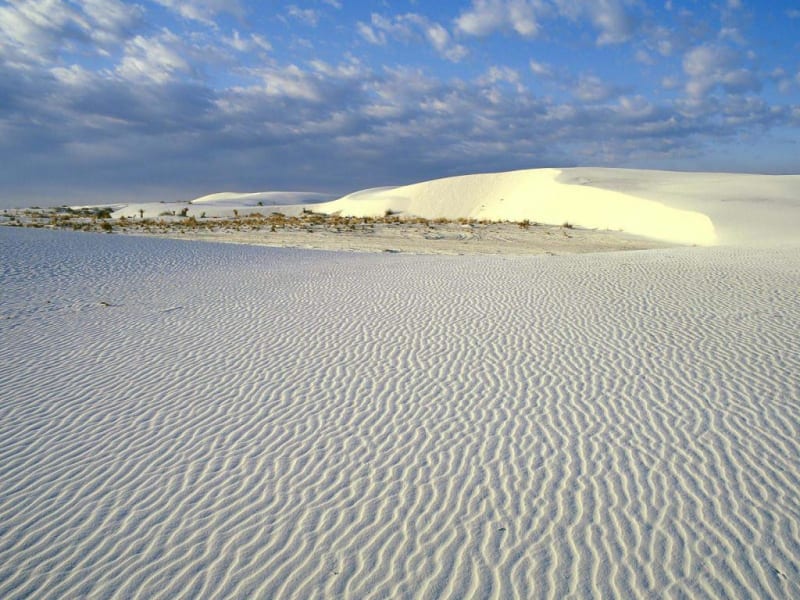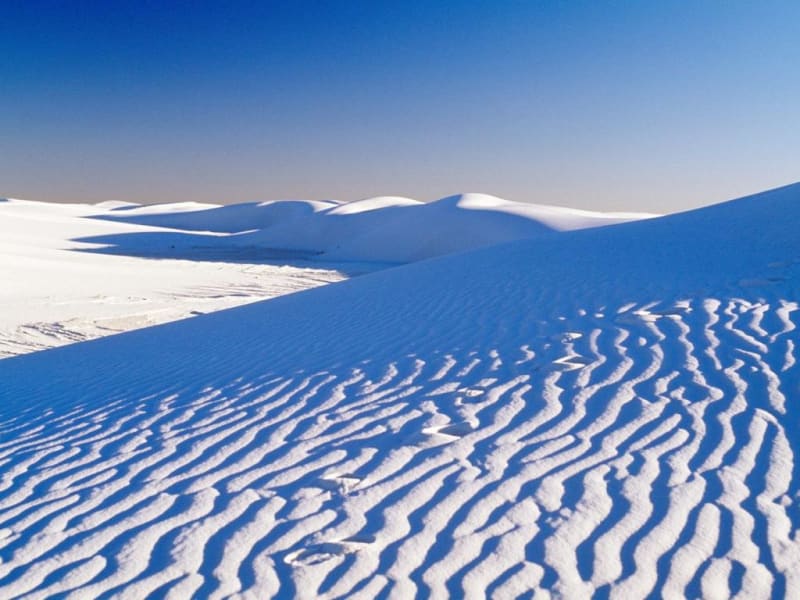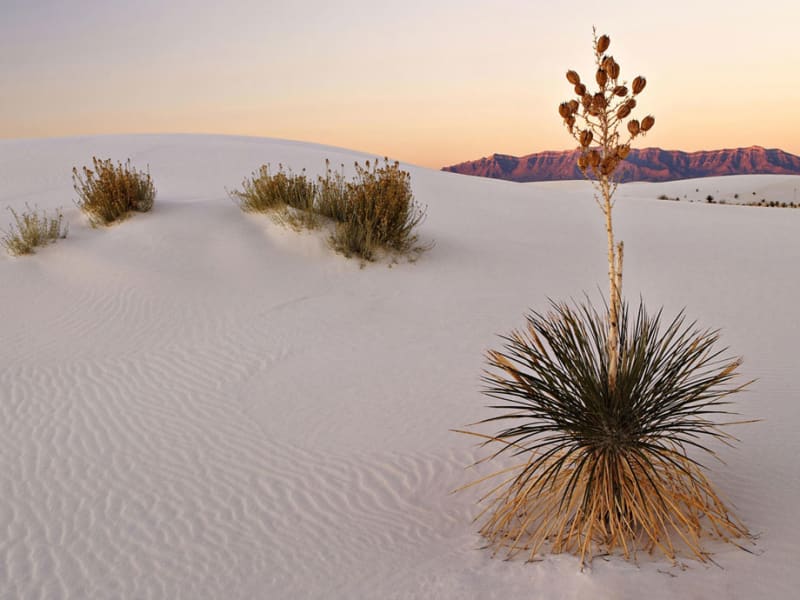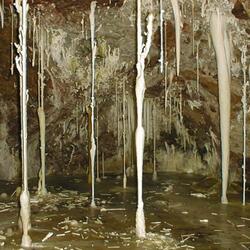National Park White Sands
White Sands National Monument is a natural monument in New Mexico, located 25 km southwest of the city of Alamogordo, in the western part of Otero County and the northeastern part of Dona Ana County. The White Sands are located at an altitude of 1,291 m above sea level, in the Tularosa Valley surrounded by mountains. The area of the park is about 710 km2, it consists of fields of white sand dunes consisting of the smallest gypsum crystals.
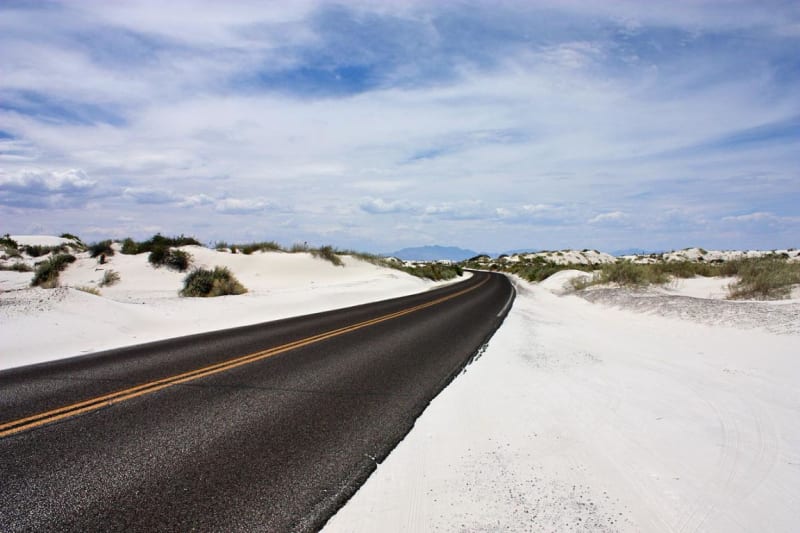
The idea of creating the White Sands National Park dates back to at least 1898, when a group of enthusiasts from El Paso proposed the creation of the Mescalero National Park. They did not succeed because they hoped that the park would serve to preserve hunting grounds, which was contrary to the Department of the Interior's policy of preserving natural resources. In 1921-1922, Albert Bacon Fall, the United States Secretary of the Interior and owner of a large ranch near White Sands, came up with the idea of a national park that, unlike most northern parks, would be accessible to visitors all year round. This endeavor also faced a number of difficulties and ended in nothing. However, Tom Charles, an insurance agent from Alamogordo, inspired by Fall's proposal, was able to gather enough public support for the creation of the park, relying on the economic benefits of the enterprise. On January 18, 1933, President Herbert Hoover signed the documents on the foundation of the White Sands National Natural Monument. The grand opening of the park took place on April 29, 1934, and Tom Charles became the first curator of the monument.
Gypsum is rarely found in the form of sand, because it easily dissolves in water. As a rule, the rains wash out the gypsum and carry it along the water currents to the sea. The Tularosa Valley is landlocked, and the gypsum that rains wash out of the nearby San Andres and Sacramento Mountains ends up trapped in the basin. Subsequently, the moisture dries out, and gypsum in the form of fine sand, called selenite, remains on the surface. Hundreds of millions of years ago, an ancient sea was located on this site, which dried up, leaving Lake Otero. When the lake dried up thousands of years ago, it left a huge area covered with selenite. Under the influence of winds, huge white dunes constantly change the relief, creating the impression of an alien surface. Unlike ordinary quartz sand, gypsum sand does not heat up even in the hottest summer months, and you can safely walk on it with bare feet.
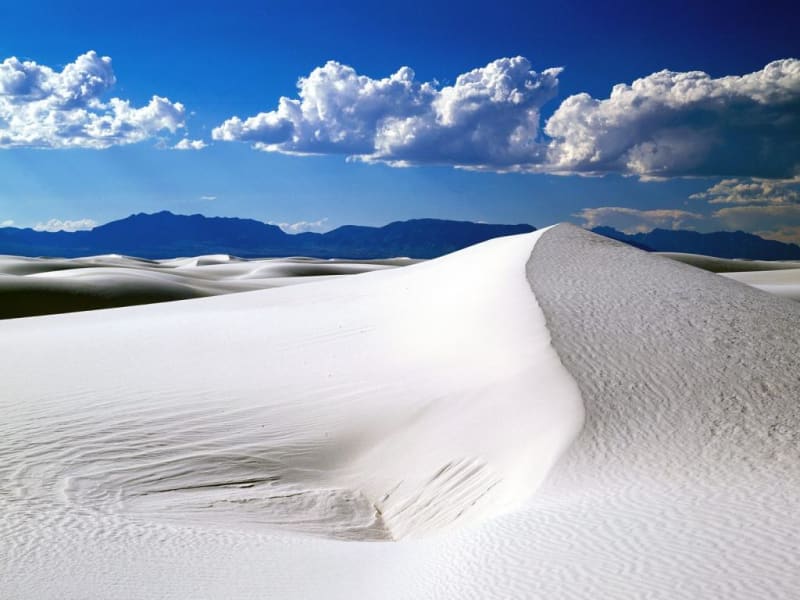
Due to its uniqueness, this area has been overgrown with legends and tales for many years. In particular, there are rumors that UFOs land here, and over the past half century, eyewitnesses have repeatedly noticed strange flying objects over the White Sands. It is also believed that the Indians of southwestern and northern Mexico chose the territory of the snow-white desert, and came here for meditation sessions to consult with the spirits of their ancestors. However, these legends do not frighten at all, but only attract more and more new travelers to New Mexico. For them, there are highways and footpaths that lead through completely bare "moving" dunes, as well as through an area partially covered with strange vegetation and inhabited by equally strange albino animals. The best time to visit the dunes is in winter, when there are not many tourists here, and the winter sun twinkles very beautifully on the white sands of the desert.
The monument is completely surrounded by military installations, and the administration has always had a difficult relationship with the military. It happened that rockets fell on the park's property and caused destruction in areas open to visitors. In 1969, the State Department of Hunting and Fisheries began breeding chamois in the Tularosa Valley to develop hunting as a sport. The chamois, which have no natural enemies in this region, invaded the lands of the "White Sands", competing for food with local species. In January 2008, "White Sands" was included in the preliminary list of UNESCO World Heritage Sites, and this caused a real battle between supporters and opponents of changing the status of the park. If the position of the supporters is quite clear, then the opponents emphasize that the army will inevitably suffer, since sooner or later international pressure will force the US government to close or relocate some of the facilities. During military tests, for the safety of people, "White Sands" is closed to visitors because the park is located within the range of missiles.
